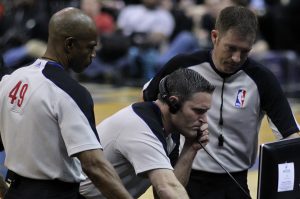On December 25, 2015, Sony Pictures released a film that, for all intents and purposes, culminated reports, concerns and lawsuits regarding the increasing fear that American football is detrimental to the health of its players. The movie, marketed as a story “the National Football League didn’t want to be told,” illustrated the negligence of the NFL to take health concerns of long-term head trauma seriously. The film was aptly titled Concussion.
Concussion alone was enough to spark legitimate debate as to whether the NFL as we know it would survive the wave of research, complaint and fear surrounding football. Will Smith’s passionate, powerful performance illustrated the plight of what seems to be a long list of lawyers, doctors, former players and families fighting to bring the issue to light–a struggle which reached the media in the early 90s, but was mostly stamped out until about five years later when brand-names like Mike Webster were ruled permanently disabled due to concussion complications, and Troy Aikman acknowledged head trauma as a cause to his retirement. In 2002, Dr. Bennet Omalu discovered the now notorious disease Chronic Traumatic Encephalopathy (CTE)–and his plight fell on deaf ears. The list of warning signs and stories continued, but stories refuting claims that football was a major health threat were just as numerous as the concussion stories themselves. It was not until recently that the NFL community, fans and corporation alike, began to take warnings on concussions seriously.
It wasn’t until March 14 of this year, in fact, that an NFL representative officially recognized the clear link between “football and degenerative brain disorders like C.T.E.” This New York Times article likened the announcement to the first time that cigarette manufacturers publicly acknowledged the prolonged health risks of smoking in 1997.
And the NFL isn’t the only football organization under attack. Lawsuits are emerging against the Pop Warner Football League (the official little league of football) citing clear effects of C.T.E. in people who never even reached the NFL–evidence now supports a claim that even youth football is a serious long-term health risk.
The question is, of course, if recent actions of the NFL to protect player health will trickle down to high school and youth leagues, and if they will make significant contributions to player safety.
But the deluge of evidence, negative publicity, and lawsuits has many football fans asking not what the NFL is doing now to fix the problem, but rather if the problem can be fixed at all.
The media and the fans are wondering if the NFL will survive the concussion crisis.
The simple answer can be found in the New York Times’ apt smoking comparison–the admission of the tobacco companies that their product was causing irreversible harm in their users did not kill the industry. And while use of tobacco did decline soon after, 18 years later, tobacco use is again on the rise.
In other words, evidence that the American public completely shuns things that are bad for them is weak at best.
Mothers Against Drunk Driving, for example, could not ban alcohol altogether even though their lobbying efforts were strong enough to raise the drinking age from 18 to 21. Activists have the ability to make waves in government and corporate policy, yes, and those activists for the C.T.E. cause have certainly illustrated their unignorable prowess in the public eye.
But this isn’t tobacco or alcohol. This is football. America’s sport. And as the script of Concussion would put it, this is the organization that, for almost half the year, owns an entire day of the American week.
It would take a much more significant effort of parental collaboration to prevent children from getting into football in the first place–which seems the most logical tactic to take down the NFL. This effort cannot be down without the help of lawmakers–and the battle to eliminate one of the most popular ways for kids to get exercise and have healthy, active lifestyles in their early years is simply implausible.
The NFL as we know it, however, is changing. New rules, regulations and research looking to make safer helmets and pads will assuredly continue to affect the strategy, calls and emphasis on certain plays and penalties. Uniforms will change. Helmets may even disappear.
But football as an institution? Not going anywhere–at least not anytime soon.





